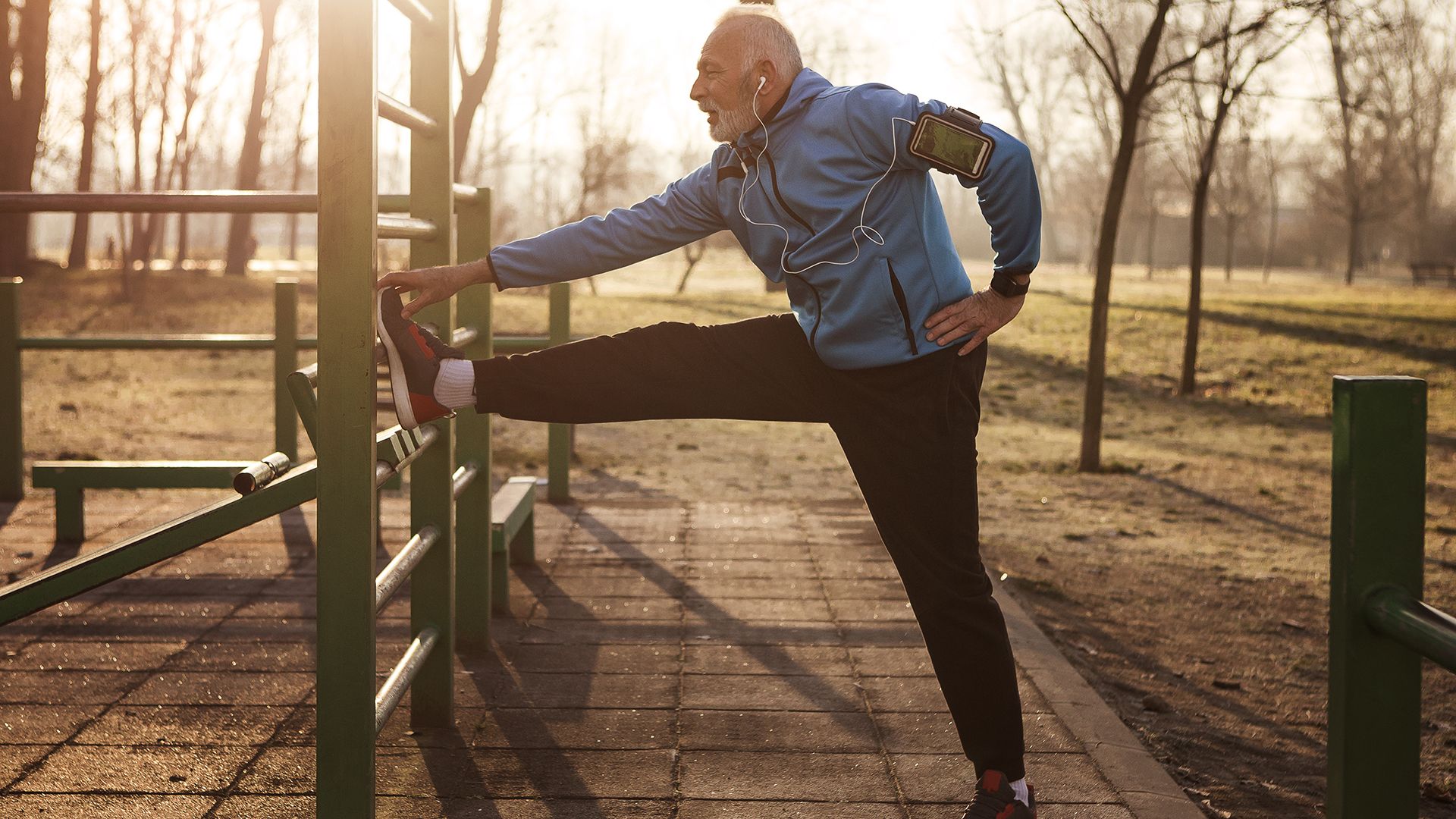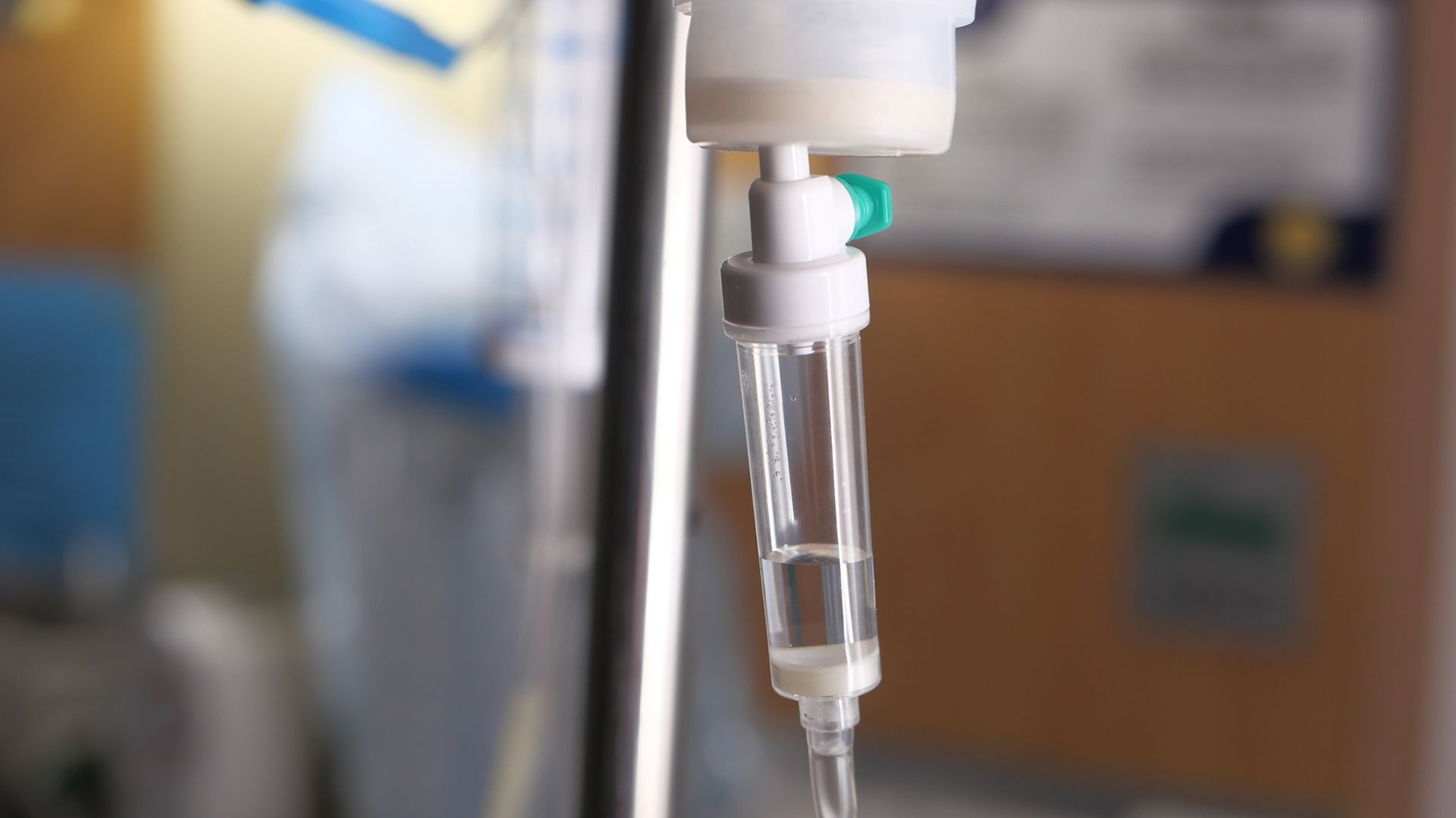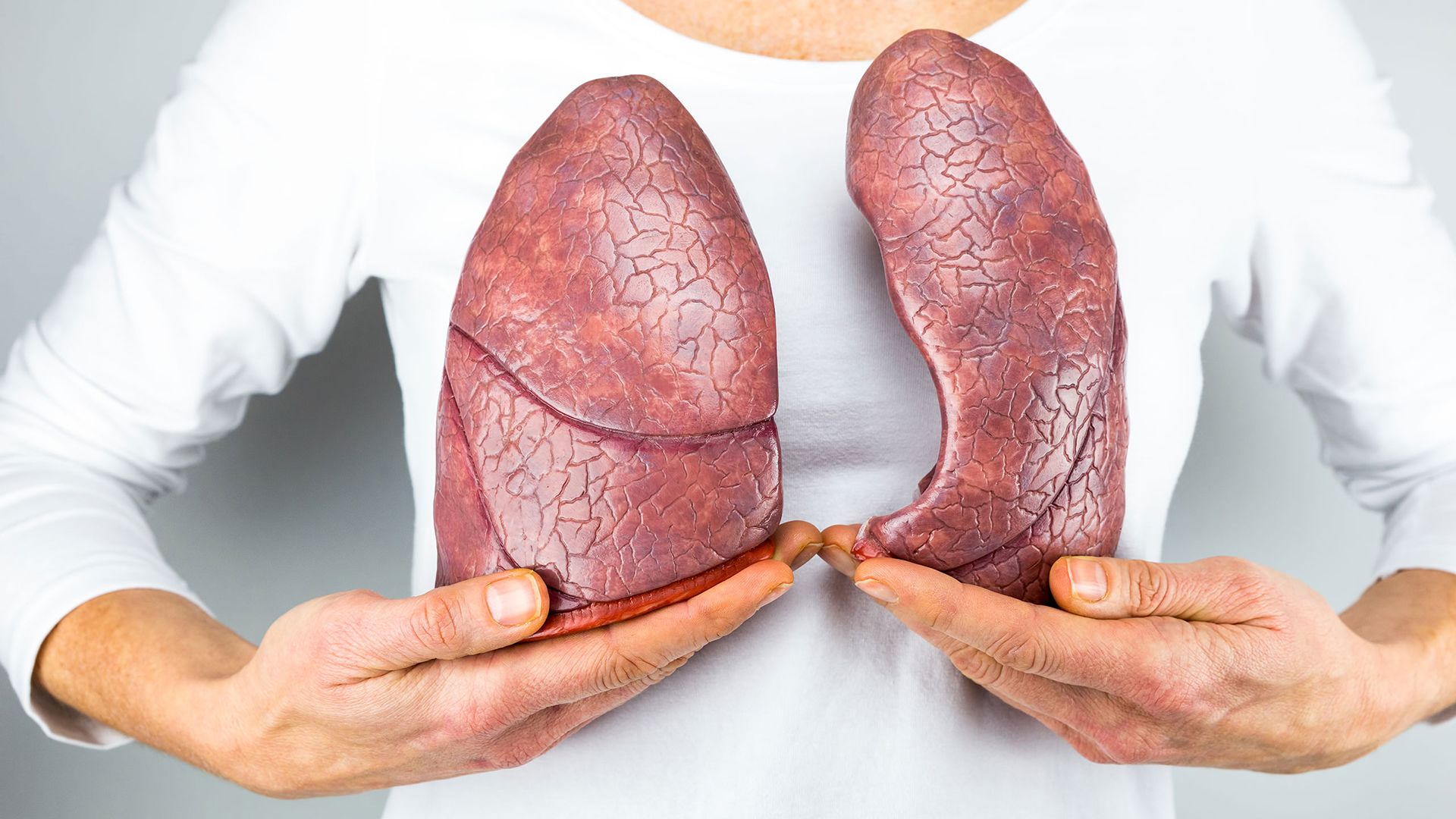Walking, climbing stairs or just going out with friends may seem difficult or impossible if you have a chronic lung condition that blocks airflow or makes it hard for you to breathe. If you’re wondering if there are ways to boost your energy level and become more active or self-sufficient, it’s important to talk to your doctor about pulmonary rehabilitation.
These programs are designed to help some people with chronic lung conditions such as chronic obstructive pulmonary disease (COPD) breathe easier and improve their overall quality of life. While increasing one’s physical activity is an important component of pulmonary rehab, it’s important to understand that it’s not only about exercise, advises Sarah Ellen Stephens, MD, a pulmonary disease specialist affiliated with Memorial Health University Medical Center in Savannah, Georgia.
“Essentially, these programs allow us to help patients be more functional and more independent,” Dr. Stephens says. “I think most people hear ‘rehab’ and think that it’s just physical exercises, like walking and strength training. But really, pulmonary rehab takes a more holistic approach. It includes coaching for healthy nutrition, understanding when, how and why to use prescribed medications and therapies, and provides an opportunity to share with and learn from other individuals with chronic lung diseases.”
What is pulmonary rehab?
Pulmonary rehab—essentially, rehab for the lungs—is a comprehensive program for people with chronic lung disease who may be on medications but still have trouble breathing and get winded easily during routine tasks. The program is often associated with treatment for COPD, but it could also help people who’ve had a lung transplant and those with other respiratory conditions, such as cystic fibrosis, asthma, pulmonary hypertension (a type of high blood pressure that affects blood vessels in the lungs) and lung cancer.
Rehab can supplement treatment for chronic lung disease, but it isn’t a replacement for medication or other therapies. People who participate work with a team of specialists that typically includes doctors, nurses, physical and occupational therapists, respiratory therapists, exercise specialists, dietitians, psychologists and social workers.
What’s involved?
People with COPD and other chronic lung diseases tend to lower their activity levels because exercise can make it harder to breathe. But being inactive reduces fitness levels, causing people to tire more quickly or with even less physical acitivity. Pulmonary rehab can help break this cycle by helping patients build muscle and endurance.
If you participate in pulmonary rehab, you might learn how to perform leg and arm exercises that are suited to your abilities. You may use a treadmill, stationary bike or weights while your blood oxygen levels are monitored. Your exercise regimen may also be adjusted over time as your fitness level changes.
In addition to exercise, you can also expect your pulmonary rehab program to include the following:
- Nutritional counseling: Excess weight around the belly can put pressure on your diaphragm, a muscle that plays an important role in breathing. On the other hand, chronic lung disease can cause you to lose weight and muscle, which can make you weak and also make breathing more difficult. Your doctor and a nutritionist may recommend that you follow a certain eating plan or take protein supplements to help mitigate these effects, depending on whether you need to lose or gain weight.
- Education: During pulmonary rehab, you’ll learn more about your condition, including what could worsen your symptoms, how to keep them under control and what to do if they flare up. You may also receive instruction on taking your medicine properly and how to use inhalers and supplemental oxygen.
- Strategies to conserve energy: If you learn easier ways to do everyday activities, you may feel less short of breath. Physical and occupational therapists can teach you how to minimize reaching, lifting and bending, all of which can contract your abdominal muscles and make breathing more difficult.
- Stress reduction: Stress and anxiety can zap your energy and make breathing more difficult. Pulmonary rehab may also cover ways to relax and avoid stress.
- Breathing techniques: Pulmonary rehab specialists can teach you how to perform breathing exercises, such as pursed lip breathing and belly breathing, to help you breathe more efficiently. Pursed-lip breathing involves inhaling through the nostrils and exhaling slowly through slightly pursed lips. For belly breathing, people inhale through the nose then exhale more slowly through the mouth while paying attention to how their belly rises and falls with each breath. This can help people with COPD, in particular, who may have a buildup of stale air in their lungs. Getting this old air out of the lungs increases oxygen levels and enables the diaphragm to work better.
- Emotional support: Chronic lung disease, like COPD, increases the risk for depression and anxiety. Limiting your activities, frequently feeling tired and having trouble breathing can take an emotional toll, which could affect your ability to follow your treatment plan and lead to symptom flare ups. Counseling and support groups can help you ease stress and stay positive.
Some programs also help people stop smoking, but some may require patients to quit before they can start pulmonary rehab. These programs won’t reverse the damage that’s caused by smoking, and quitting is an essential part of helping you breathe easier and get stronger.
One size doesn’t fit all
Pulmonary rehab is not the same for everyone. Each progam is personalized or tailored to a patient’s specific needs and abilities. Before the program begins, members of your healthcare team will perform a detailed evaluation to help them formulate the plan.
“First, the team will help figure out what the patient’s goals are and how they’ll be able to help this person the most,” Stephens says. “They’ll also do some initial assessments of the patient: how far they’re able to walk, how low their oxygen levels get, how strong they are and how quickly they tire to help tailor the program to their individual needs.”
After enrolling in pulmonary rehab, your lung function and fitness level would be evaluated in a walk test or other assessment. Your treatment plan, stress level, eating habits and muscle mass would likely be considered as well.
Most pulmonary rehab programs last 6 to 12 weeks and are conducted in small group settings, but some people can receive this therapy at home. Others may engage in pulmonary rehab while they are in the hospital. Outpatient group sessions may be held anywhere from one to three days per week. Hospitalized patients may receive pulmonary rehab more frequently.
“I think a lot of people think they just won’t have time for it, but I always tell my patients to at least give it a chance,” Stephens says. “It can be as short as four weeks, and it offers major benefits. It’s the single best intervention we have for improving quality of life in patients with chronic lung disease.”
Stephens also notes that pulmonary rehab doesn’t really end after the last session. “Pulmonary rehab gives patients the skills and coping mechanisms they need to maintain their level of function even after completing the program,” she explains. “They’ll know exercises they can do at home and how to use their energy more efficiently.”
Will it really help?
The ultimate goal of pulmonary rehab is to help people who struggle to be active and independent due to chronic lung disease improve their quality of life and avoid hospitalization.
It’s important to remember, however, that there is currently no cure for COPD, asthma, cystic fibrosis and some other chronic lung diseases. But pulmonary rehab can help many people with these conditions maximize the lung function they still have while decreasing fatigue levels and boosting strength—all of which can make a big difference in their outlook and daily lives.
A 2015 review of 65 studies involving more than 3,800 people published in The Cochrane Database of Systematic Reviews concluded that pulmonary rehab helps people feel more in control of their lives and improves their emotional well-being. Researchers also found the rehab programs included in their analysis, most of which lasted for eight to 12 weeks, significantly eased symptoms, like shortness of breath and fatigue.
Is pulmonary rehab right for you?
Your doctor will determine if you qualify for pulmonary rehab and if you’ll benefit from this program. Several factors should be considered, including how far your disease has progressed, your level of physical activity and your willingness and ability to participate.
Being frail or having advanced-stage lung disease doesn’t necessarily mean that you won’t qualify for pulmonary rehab. But some people with heart disease or an irregular heart beat, severe arthritis, cognitive impairment and certain mental health issues may not be good candidates for this type of program.
If you have chronic lung disease and you struggle with shortness of breath and have trouble performing normal daily activities, talk to your doctor about pulmonary rehab and whether it may be right for you.





